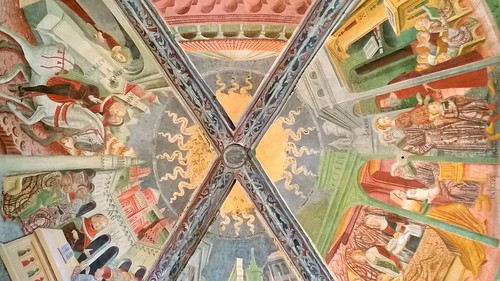Sønderportsgade, Ribe, Denmark.
Ribe, the oldest Danish town, is situated in southwest Jutland, now part of the enlarged Esbjerg Municipality in the Region of Southern Denmark (Syddanmark).
Established in the first decade of the 8th century and first attested in a document dated 854 AD, Ribe is the oldest town in the country.
When Ansgar, the Archbishop of Hamburg-Bremen, set out on the mission to bring Christianity to the North, he made a request in 860, to the King of Denmark, that the first Scandinavian church be built in Ribe. This was not coincidental, since Ribe already was one of the most important trade cities in the Scandinavian countries.
The town has many well-preserved ancient buildings: the most famous is the beautiful Ribe Cathedral. Denmark’s oldest town hall is found on the town’s Von Støckens Plads.







